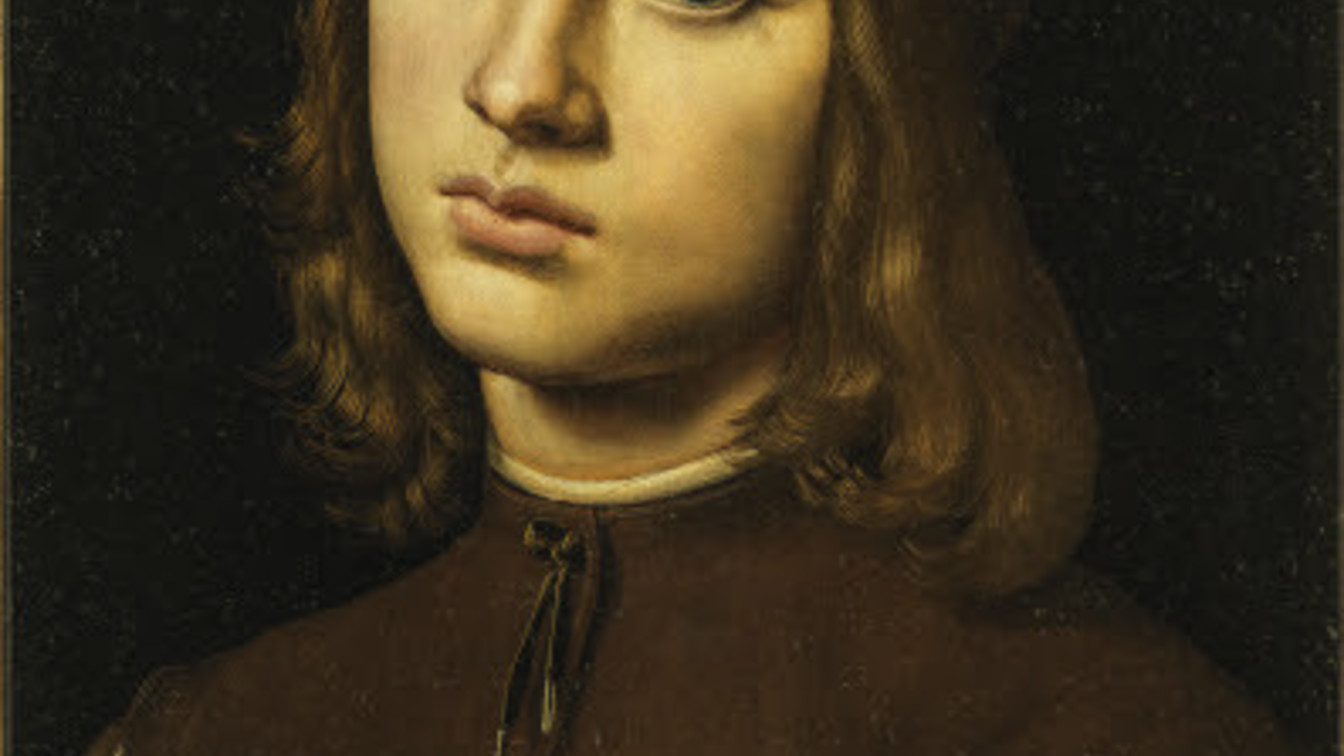

On the 500th anniversary of the death of Pietro Vannucci, known as ‘il Perugino’, Fondazione Perugia is partnering with Fondazione Burri to hold an exhibition from June 22 to October 2, 2023 at Palazzo Baldeschi. The exhibition creates a dialog between the works of two of Umbria's greatest artists through the common denominator of nero (black), a striking and peculiar color solution adopted by both painters. The exhibition reveals the common traits of two artists equal in greatness and only seemingly distant.
Fondazione Perugia participates in the celebrations dedicated to Perugino with a new and original exhibition: ‘Nero Perugino Burri’. The brainchild of the foundation itself and achieved in collaboration with Fondazione Burri, the exhibition is curated by art historian Vittoria Garibaldi and President of the Fondazione Burri, Bruno Corà, who accepted with great enthusiasm the challenge of bringing Perugino's works into dialog with the works of Alberto Burri, two artists so distant in time, but united by their very strong ties to their homeland of Umbria.
The trait d'union of the exhibition - composed of about twenty works - is the use of Black by both masters, a problematic color, often avoided by artists, as Bruno Corà explains: “Black is full of possible symbolic significance. It is a canceling color and difficult to use, capable of isolating any form or image that gets close to it, in the same way as it can make it emblematic. It is a color that raises many questions and reaches the depths of our feelings.” Used skillfully by the artists featured in this exhibition, it was a major innovation for Perugino's time and one of the most recurrent features in Burri's work.
The trait d'union of the exhibition - composed of about twenty works - is the use of black by both masters
The idea for the exhibition came from Perugino's work the Madonna and Child with two cherubs, a precious panel with an intimate and familiar feel and part of the permanent collection of Fondazione Perugia. The masterpiece depicts the Virgin and Child against a black background, allowing the complexion and colors of the robes to stand out in a way that was completely innovative for the time. These were the golden years of Perugino's career, during which, working in Florence, he discovered and absorbed Flemish painting and the light of Leonardo, but he was also caught up in the atmosphere of Venice, which he visited several times during the 1990s.
Hence the desire to investigate the use of the black background in some of Perugino's works, all of which are small format and dated between the late 15th and early 16th century, where there is no ideal landscape or borrowed from a visual suggestion, no perspective architecture, only the deep black against which the protagonists of the scene stand out, as never seen before. This research led to important loans, such as the splendid Portrait of Francesco delle Opere, probably painted in Venice, and the Portrait of a Boy, from the Uffizi Gallery, and again the Madonna and Child with St John the Baptist and St Catherine of Alexandria from the Louvre Museum.
In dialog with Perugino's panels are a dozen works by Alberto Burri, in which we find the same interest in black, again understood not as a lack of color, but as darkness that allows light to emerge. Burri was a great admirer and connoisseur of Italian Renaissance art, as curator Vittoria Garibaldi tells us: “I had the honor of knowing, but more importantly spending time with Alberto Burri in the 1980s. He used to retrace the paths of the Renaissance in Central Italy together with his closest friends, such as Nemo Sarteanesi. This is a dialog with distant roots that is confirmed by the lines, shapes and sensitivity to color that unite the two great artists.”
In particular, Burri was indissolubly tied to his much-loved land of Umbria, home to Piero della Francesca, Raphael and, of course, Perugino, a bond revealed and confirmed in the forms, colors and compositions of his works, from Catrame (Tar) in 1949 to Nero Cellotex in 1968. Here matter emerges overbearingly from the canvas and the focus is entirely on the balance between form and color, with a predilection for black and dark, a trait that has become so emblematic of the artist that he is nicknamed “il maestro dei neri” (the master of blacks). Burri's works thus can be considered an ideal dialectical proposition with Perugino's panels: whilst in the 15th century, the black background served to bring out the main subject of the work, with Burri, the color black is the protagonist and becomes living matter that expands and emerges.
“The intuition of this dialog between the two masters,” concludes the President of Fondazione Perugia Cristina Colaiacovo, “came about through our desire to celebrate the five-hundredth anniversary by concentrating on the most precious piece in the art collection owned by the Foundation: the Perugino panel Madonna with Child and two cherubs. This was where the exhibition all started, which was initially intended to be dedicated only to Pietro Vannucci and which later, thanks to the expertise of the curators, led to this original and totally novel art exhibition. We are very grateful to the Burri Foundation for this fruitful collaboration between local cultural institutions, which we will continue to nurture to foster the attractiveness of our region.”